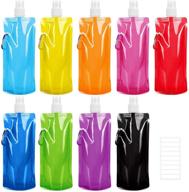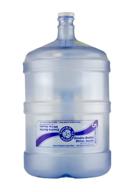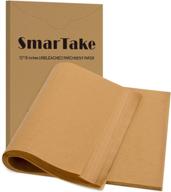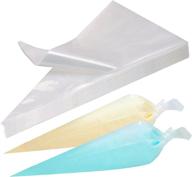
Review on Double Walled Stainless Tumbler Silver by Brooke Daniels

Colossal Large Vacuum Flask - Smart Swivel Cap
This vacuum flask has a relatively small bottom diameter and larger top diameter to hold a whopping 30 ounces of liquid. It's made from 18/8 stainless steel, meaning it's 18% chrome and 8% nickel, just like premium stainless steel cookware. It is very unlikely to get dirty or rusty and the nickel makes it very durable. What people often don't realize is that vacuum flask is a generic term for a branded product called Thermos™ Bottle. Built in New York, this container is 8¼" tall, just under 3" in diameter at the base, and just under 4" in diameter at the top. It holds 30 ounces of liquid. That's just under 4 measuring cups of water, not a coffee-sized cup. Most coffee mugs hold up to two cups of water, so think of it almost as two coffee mugs. Oh, be sure to scroll down to see my temperature test chart. This vacuum bottle fits fairly easily in the cup holder on the center console of my latest Honda Accord - probably the industry standard size. Check out my photos so you can see how it fits. This vacuum bottle has a hinged sliding lid that reveals a small opening through which a flexible plastic straw can be inserted. However, an ordinary straw would just fall all the way in. You will need a very long time. I have several long glass straws that almost go through the hole. Although the glass straws are longer, they can also slip off and fall into them. So the only viable method is to use your lips and the ancient technique of drinking from a tall bottle or glass. Next time you go to your favorite fast food restaurant, you might find a very long straw. Maybe recycle it by taking it to your car instead of throwing it in the trash. However, I wouldn't recommend drinking coffee through a plastic straw - hot liquids can leach unwanted chemicals from the plastic into your mouth. Glass or stainless steel are chemically safer. Of course, glass can break, as evidenced by the 55-year-old scar from chemistry class that is still visible on my right arm. The table below gives you an idea of its ability to keep the contents cool. I keep my fridge at 38°F and keep a lot of bottled water in it. I put this vacuum flask in the -2°C freezer overnight to give it a little better start, but it didn't help much in the long run. You will notice that the temperature changes less per hour as the water gets warmer. This is because the water temperature is approaching the outside temperature of 75°. As a result, the temperature difference between the inside and outside of the bottle is smaller. Therefore, the temperature difference between inside and outside is smaller. Eventually the temperature inside and outside will be almost the same - given enough time. Initial temp: 37.7 degrees Fahrenheit, 44.6 degrees after 3 hours…… increase of 6.9 degrees is not bad given the plastic cover 48.7 degrees after 5 hours…. … Gain 11.0° Total 50.5° after 7 hours……. Gain 12.8° Total 55.2° at 9 hours…… Gain 17.5° Total 58.4° at 12 hours…… Gain 20.7° Total 64.0° at 20 hours…… Gain 26.3 ° General I haven't tried this vacuum coffee bottle because I don't really like coffee, but I like to drink ice water in the car, even for relatively short trips. So I ran a temperature test to see how well it keeps the water cool. The test was conducted at an ambient temperature of 75 to 76 degrees in my house, so that's a pretty benign ambient temperature. I found that to keep the water temp low enough for my ice water preference, I would need to add a few ice cubes. Now, if you start with very hot coffee, the temperature change will be faster than shown in the graph above. – because the coffee temperature is usually much higher than the room or ambient temperature. If you don't keep that vacuum bottle in a hot car in August, you will. The rate of temperature change is a direct relationship between internal and external temperature difference. The greater the temperature difference, the faster the liquid inside will heat up or cool down. It's just physics. Bottle materials and overall design have something to do with how quickly this happens, but these days the concepts are well understood and there isn't much of a difference in thermal calculations. The design of the lids affects heat gain or loss. A real vacuum bottle usually has an insulated stopper that protrudes into the inside of the bottle. But this Built NY cap is pretty chic. In a sense it is doubly insulated by creating a small air gap with a slider that snaps in the middle of the base that covers the vacuum bottle opening. Plus, it's also a way to greatly reduce leakage if you knock it over - if you grab it in time. But no matter how fast you go, some liquid will spill - the only question is how much. They left an air gap to let air in when you drink liquid, making it easier to swallow the drink faster. For easy cleaning, simply detach the bottom center by pressing on it and you have two easy-to-clean plastic discs.
- Great Price
- Poorly Thought Out
New products
Comments (0)
Top products in 🌴 Travel & To-Go Drinkware

Bubba Flo Duo 24 🚰 oz. Smoke Dual-Wall Insulated Water Bottle

12 Review

Tomnk 9pcs Collapsible Water Bottles: Reusable Canteen Bags with Clip for Sports, Biking, Hiking & Travel - 9 Colors

12 Review

High-Quality New Wave Enviro Products BPA Free Tritan Bottle, 5-Gallon for Optimal Hydration

11 Review

HomTune Unicorn Water Bottle - 23oz BPA-Free Tritan, Leak Proof, Easy to Clean with Carry Handle and Straw for School Girls

11 Review
Another interesting products

PME Scriber Needle Modelling Tool, For Cake Decorating, 5.7-Inch

38 Review

4 Pack 12 Inch Stainless Steel Round Pizza Baking Pan Tray Crisper Sheet Oven Cooking Healthy For Pizzas - Deedro

47 Review

300PCS Pre-Cut Unbleached Parchment Paper Sheets - Perfect For Baking, Grilling, Air Fryer & Steaming!

36 Review

100-Pack Of Disposable 18-Inch Piping Bags For Cake, Cupcake, And Cookie Decorating - Perfect For Icing And Frosting!

41 Review

